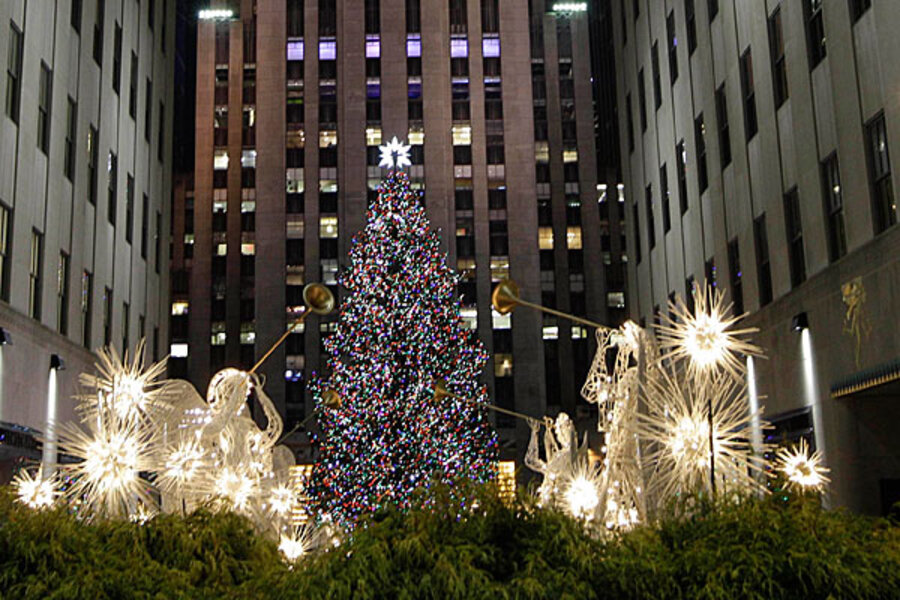New Jersey spruce survives Sandy, lights up Rockefeller Center
Loading...
| New York
An 80-foot Norway spruce that made it through Superstorm Sandy was transformed into a beacon of shimmering glory Wednesday when New York City Mayor Michael Bloomberg and others turned its lights on at Rockefeller Center.
Thousands of onlookers crowded behind barricades on the streets that surrounded the center during the traditional tree-lighting ceremony for the Christmas holiday season. A video screen projected an image of the tree for those who did not have a direct line of sight.
"It makes me want to sing and dance," said Zuri Young, who came several hours early with her boyfriend to watch the lighting for the first time.
RECOMMENDED: How much do you know about Christmas traditions? Take the quiz
"I've heard a lot about it. I was kind of sick of staying home and watching it on television," the 19-year-old nursing student from Queens said.
Illuminated by more than 30,000 lights, the tree from the Mount Olive, N.J., home of Joe Balku was topped by a Swarovski star. The 10-ton tree had been at the homestead for years, measuring about 22-feet tall in 1973 when Balku bought the house. Wednesday, its girth reached about 50 feet in diameter.
"It's an experience that I cannot get back home," said Freyja Shairp, a 22-year-old from Sydney, Australia, who is working in the U.S. temporarily. She said she hadn't planned to come, but was in the neighborhood.
Standing next to her was Donna D'Agostino, 48, and her 17-year-old daughter. She said she lived in New York City her whole life and decided this was the year she was going to see the lighting.
"It's a bucket list item," said D'Agostino. "I think it starts the whole season."
Balku lost power and other trees during the Oct. 29 storm at his residence about an hour outside of Manhattan. The spruce survived, and Erik Pauze, the head gardener at Tishman Speyer, one of the owners of Rockefeller Center, picked out the tree. He said he found it by accident when he got lost while returning to the city on a tree hunting expedition.
"It wasn't even on our list. It was a good find," Pauze said.
Pauze said workers prepared for Superstorm Sandy by bracing the tree with cables to secure and protect it. It was moved in November.
Officials turned on the lights just before 9 p.m. Wednesday in the 80th annual celebration. Prior to that, the tree-lighting event include performances from Rod Stewart, CeeLo Green, Scotty McCreery, Il Volo, Victoria Justice, Brooke White, Mariah Carey, Trace Adkins and Tony Bennett, along with appearances by Billy Crystal and Bette Midler.
The tradition of a Christmas tree at Rockefeller Center started in 1931, when workers building the center put up the first one. No tree was put up the following year, and in 1933, the first tree-lighting ceremony took place.
People will be able to view the tree until Jan. 7. After its stint in the spotlight, it will be turned into lumber for Habitat for Humanity.
RECOMMENDED: How much do you know about Christmas traditions? Take the quiz
Copyright 2012 The Associated Press.







